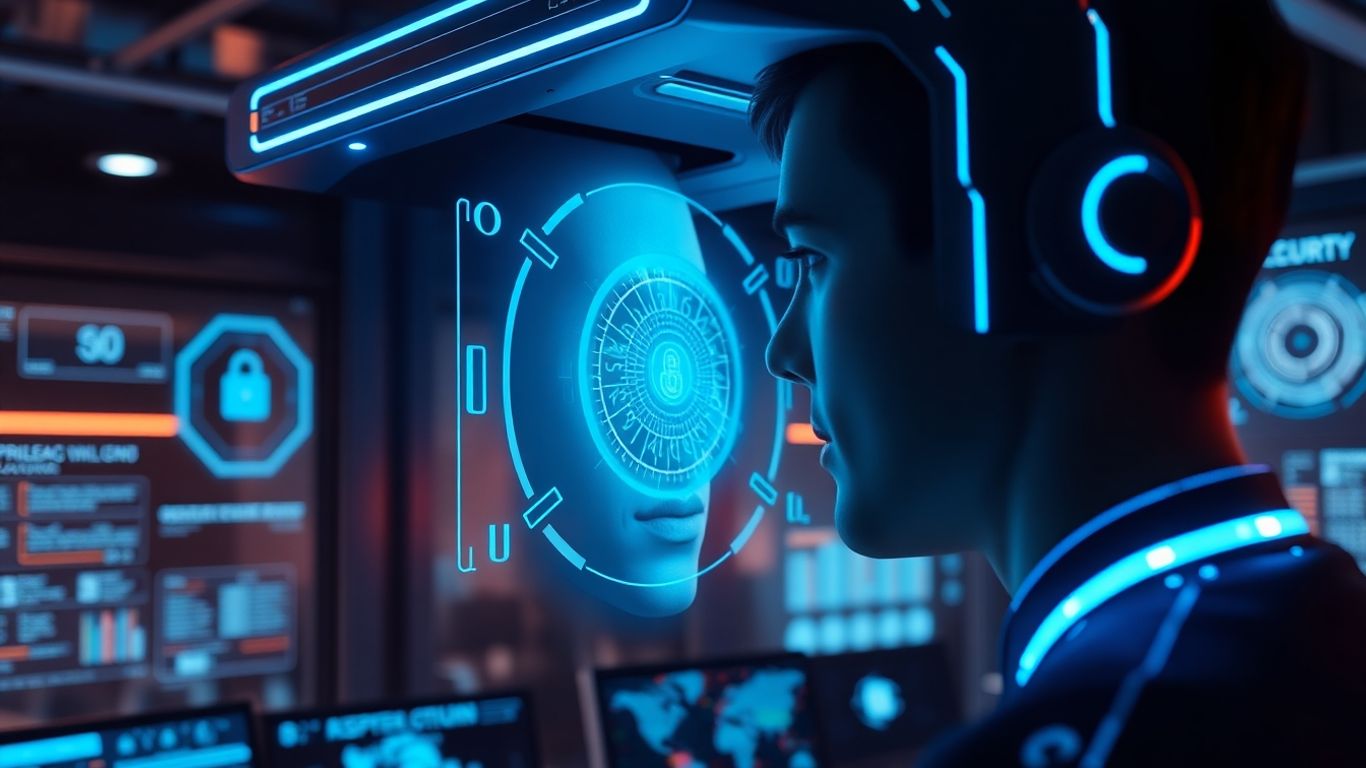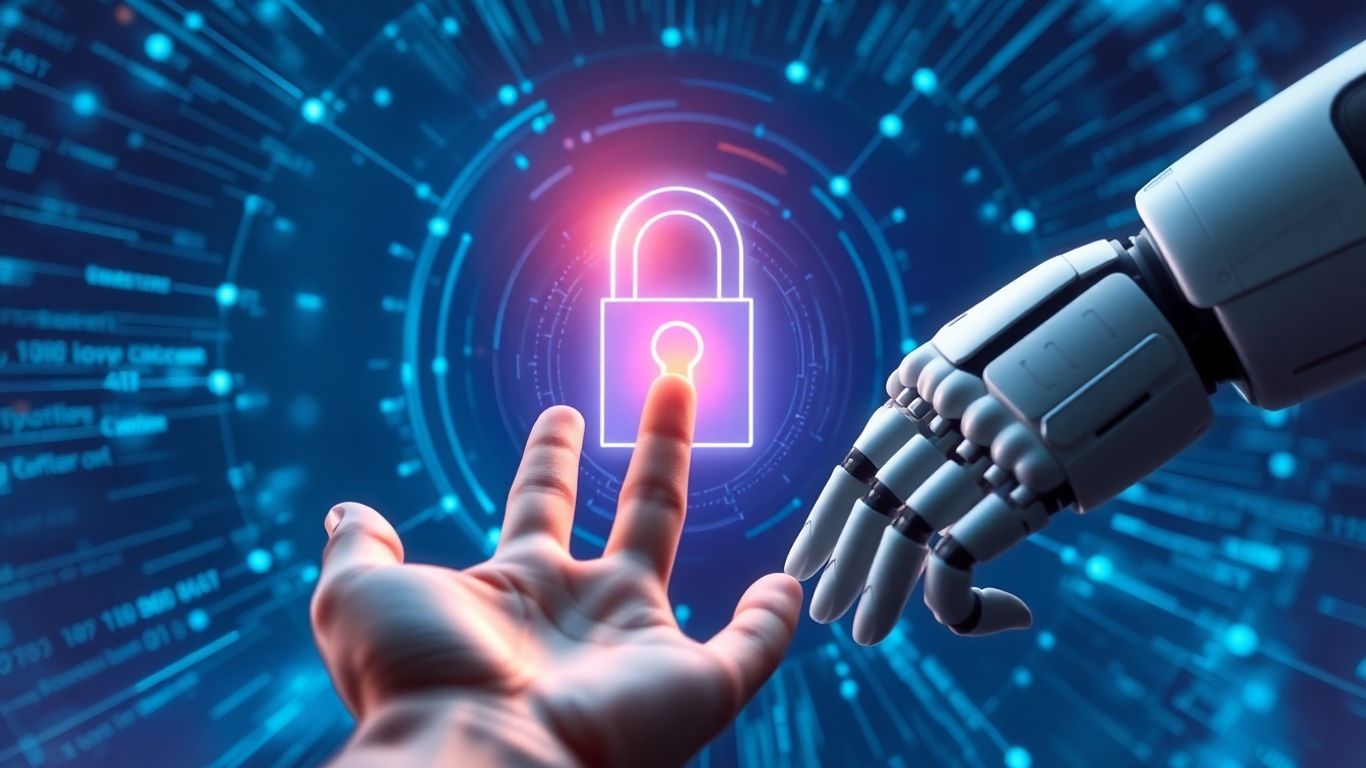[ newsletter ]
Stay ahead of Web3 threats—subscribe to our newsletter for the latest in blockchain security insights and updates.
Thank you! Your submission has been received!
Oops! Something went wrong. Please try again.
Explore Secure AI identity systems to build trust, resilience, and safety in intelligent automation and Web3.





Building trust in digital systems isn't easy, especially now that artificial intelligence is running more and more of the show. Secure AI identity systems are becoming a must-have as we move deeper into the age of automation, smart contracts, and Web3. These systems aren’t just about stopping hackers or plugging leaks—they’re about making sure people and machines can interact safely, with confidence that everyone is who they say they are. In this article, we'll look at what makes these systems tick, why they're so important, and what needs to happen to keep them reliable as tech keeps changing.
Building digital trust in the age of automated AI isn’t simple, especially with everything getting more decentralized. Security practices that worked a decade ago are starting to feel clunky—sometimes, they just don’t cut it anymore. A modern identity system needs to keep up with the speed of smart contracts, AI decisions, and users who want both privacy and security at the same time. Here’s a breakdown of what sets the foundations for solid AI identity systems, especially as we head into this next phase.
AI identity in a decentralized world is all about making sure autonomous agents, smart contracts, and human users can prove who (or what) they are—without relying on any central authority. That way, you avoid classic single points of failure and reduce the risk of one insider putting the whole ecosystem at risk. In practice, these identity systems need to:
It’s tricky because decentralized identity means nobody is supposed to be the "judge" of truth, so smart automated ways to handle trust become vital.
AI systems might be smart, but if you can’t trust them—good luck getting anyone on board. Trust feels intangible, yet it comes down to a few basics: reliability, transparency, and an AI’s ability to make decisions that align with human interests. In the context of automation, trust is built by:
Trust isn’t just a buzzword—without it, automated decision-making systems are ignored, or worse, actively resisted by users and regulators alike.
Digital credentials are the backbone of proving an AI agent’s identity—it’s basically a digital passport. For these identity systems to work at scale, digital credentials should be:
Strong credentials minimize unnecessary data sharing and keep the system running smoothly—even when identities move or get upgraded over time.
All in all, these basic blocks—clear identity definitions, real trust mechanisms, and certified credentials—are shaping the backbone of trustworthy, future-proof identity for AI-driven automation in decentralized settings.
Web3 promised a better, more user-driven internet. But it also put a whole lot of pressure on security. When almost everything runs without a central authority, keeping identities safe and trustworthy is a never-ending battle. Below, let's break down the main hurdles that make secure AI-driven identity such a difficult job in today's Web3 landscape.
Web3 projects are tossing tech innovations into the wild at a breakneck speed. But each new blockchain, cross-chain bridge, or DeFi concept opens up another path for hackers. Attackers aren’t just coming up with new tricks—they're mixing and matching old ones too. Recent numbers show major losses from a variety of methods:
Key Points:
Web3 risks aren't limited to new vulnerabilities. Old-fashioned mistakes like bad key management or simple admin errors remain as dangerous as ever.
Since Web3 is global by nature, there's no single rulebook to follow. Every blockchain, app, or country may have its own set of standards (or none at all).
Here’s what this fragmentation looks like in practice:
Even in supposedly decentralized Web3 settings, a surprising amount of power can land in the hands of a few admins, validators, or insiders. This creates critical weaknesses:
The risks aren’t always high-tech—sometimes simple mistakes, privilege misuse, or lack of checks and balances are the culprit.
AI and automation are supposed to make things safer, but current tools aren't foolproof. They miss things, spit out false positives, or simply aren’t built to handle the complexity of modern smart contracts and identity workflows.
In summary:
Trust in AI doesn't appear out of thin air—it has to be built up, step by step, through clear explanations, good design, and strong oversight. Let’s look at the three main elements that keep AI-based identity systems reliable and worthy of confidence.
Open communication about how AI systems make choices is the backbone of trust. Users should be able to see the logic behind key decisions, especially when it comes to sensitive topics like identity and access.
A system is much easier to trust when it acts predictably and can explain itself, even in edge cases.
Mistakes or hacks can cause serious fallout, so good systems need to anticipate trouble. This is about building digital infrastructure that doesn’t buckle under pressure—by design.
Here's a quick look at how speed and accuracy can improve with AI-powered tools over manual methods:
Strong guardrails keep things from going off track. Accountability means it’s clear who is responsible for what, and oversight means there are real checks and balances—an area sometimes overlooked in fast-moving tech.
In practical terms: It’s better to find and fix a mistake early, rather than patch up someone else’s mess months later.
Building trustworthy AI identity systems is a team effort, a mix of good tools, steady maintenance, and a culture of transparency. If any piece slips, trust erodes—a risk that's not worth taking in identity and security.
Smart contracts and decentralized protocols are everywhere now, but keeping them safe is honestly a job that never ends. Old-school security methods—clunky manual audits and slow, expensive checks—can’t keep up with how fast everything’s changing. That’s where AI-driven solutions are seriously shaking things up. AI brings the speed and intelligence needed for modern, real-time blockchain security. Let’s walk through how these new technologies and techniques are working right now.
Example tasks handled by agents:
In these fast-moving blockchain environments, real-time protection matters more than anything—AI agents let defenders react instantly instead of hours or days later.
Self-healing contracts and automated, 24/7 audits aren’t a luxury—they’re becoming a minimum standard for serious DeFi and blockchain projects.
Why proactive intelligence matters:
Relying on hope and manual checks just isn’t realistic anymore. AI-powered security is building the trust blockchain needs if it’s really going to go mainstream.

As digital assets and decentralized apps expand, knowing exactly who (or what) you’re interacting with is more important than ever. Adaptive identity verification and risk assessment make a huge difference in keeping interactions secure in modern blockchain systems. These systems don’t just rely on fixed rules; they evolve to catch new threats and odd behaviors as soon as possible.
Digital footprints are like a trail left behind every time someone (or a bot) uses a blockchain wallet. By piecing this data together, advanced AI tools can spot fake users or unusual activities quickly. This analysis looks at everything from wallet creation dates to transaction clusters and connections to other suspicious addresses. Here’s what a typical process might look like:
Good digital forensics doesn’t just catch bad actors—it helps clear innocent users who might get caught up by mistake.
New AI-driven risk tools can check wallet addresses against giant blacklists and analyze live transactions for possible fraud, scams, or connections to big hacks. The tech is fast: users can get risk scores within seconds, whether they’re about to sign a contract or receive funds.
Key features include:
All of this, when done in real time, means you can avoid engaging with dangerous wallets before any damage is done. It also supports insurance claims or freezes in case of problems.
Balancing privacy and security is tough—nobody wants to hand over their whole identity to every website or dApp. Cutting-edge systems use things like zero-knowledge proofs or decentralized IDs, letting users prove they’re real and meet security requirements without exposing personal info.
Typically, adaptive authentication does a few things:
These solutions mean platforms can keep the bad guys out, but honest users don’t get hassled or tracked everywhere they go.
The future of identity verification will depend on systems that adapt in real time to new threats—while respecting user privacy, so the convenience and freedom of web3 can continue.
Building a secure system is never just about the technology you use; it’s about how the different pieces and players come together. In the world of AI-powered identity and blockchain, collaboration defines whether the ecosystem actually holds up in the long run or falls apart at the seams. Through cross-chain intelligence, multi-agent teamwork, and shared standards, this resilience isn’t a dreamy goal—it’s necessary for survival.
Threats love to jump from one blockchain to another, so no single chain can afford to operate in a silo. Cross-chain threat intelligence sharing means real-time alerts, trend data, and incident details travel across networks, giving everyone a fighting chance.
Here’s a comparison table of threat detection speed, before and after networks started syncing intelligence:
When chains openly share threat intelligence, users and developers end up safer—even if they never notice the tech working behind the scenes.
Multi-agent AI systems are like busy teams in a control room. Some agents monitor contracts, others chase transactions, and a few resolve conflicts. When these agents talk and work together across platforms, incidents are tackled quickly and efficiently.
Key ways multi-agent systems improve resilience:
Companies are starting to use models where AI agents cooperate both within and between ecosystems—sometimes sharing best practices via partnerships and ecosystem alliances.
Fragmented identity means confusion, weak controls, and security holes everywhere. Open standards let wallets, dApps, and verification tools understand each other—even when built by different teams. That’s not just convenient; it’s vital.
A strong approach has to include:
List of benefits from open interoperability:
When the community works together on protocols and tools, there’s far less risk of one weak link taking everyone down. The future of digital trust isn’t about silos; it’s about teamwork and shared standards.

Looking ahead, secure AI identity systems need to keep evolving. The threats aren't getting any simpler, and the tech landscape keeps shifting. If we want to build real trust and resilience, we're going to have to tackle a few tough challenges—and take on some promising new opportunities.
Quantum computing isn't mainstream just yet, but it's on the horizon. Today's encryption, which underpins blockchain and digital identity, won't stand a chance when quantum arrives. That means:
Proactive change is tough, but if upgrades aren't started early, the transition to quantum-safe systems may become impossible to roll out smoothly.
AI identity isn't just about technology—it's about how we manage, audit, and regulate new systems. There's a flurry of local and international policy discussions right now, but nothing is really settled or standardized. The next wave will require:
If smart contracts, DAOs, and AI agents are going to make decisions for people, communities, and even governments, the frameworks controlling them need to keep up—across borders and markets.
Threats change daily. The only way for AI identity systems to stay resilient is to keep learning and adapting just as fast. Some concrete steps:
Expect attackers to innovate. Systems that can't adapt will fall behind.
The future won't wait—continuous improvement and collaboration are the only ways secure AI identity systems will keep pace with change.
So, that's the big picture. As AI keeps getting smarter and more involved in our daily lives, having secure identity systems is becoming less of a nice-to-have and more of a must. The risks are real—hacks, scams, and all sorts of digital headaches—but the tools to fight back are getting better, too. AI-powered platforms like Veritas are already making things faster, cheaper, and more reliable for both users and projects. It's not just about catching bad actors; it's about building trust so people actually feel safe using these new technologies. Sure, there's still work to do—standards to set, features to improve, and communities to grow. But if we keep pushing for smarter, more resilient security, we can make the world of intelligent automation a lot safer for everyone. The journey's just getting started, and it's going to take all of us to get it right.
A secure AI identity system is a way to make sure that both people and AI programs are who they say they are when using digital tools. It helps protect users, keep data safe, and build trust in online spaces, especially in places like blockchain and Web3.
Trust is important because it helps people feel safe when using AI. If users trust that AI systems are fair, honest, and secure, they are more likely to use them. Trust also makes it harder for scammers and hackers to trick people or steal from them.
AI can quickly find and fix problems in smart contracts, spot scams, and warn users about risky activities. It can also watch over transactions in real-time and help stop attacks before they cause harm. This makes blockchain safer for everyone.
Some common risks include scams like rug pulls, phishing websites, hackers stealing private keys, and bugs in smart contracts. Sometimes, security rules are not the same everywhere, which makes it easier for bad actors to find weak spots.
Adaptive identity verification uses smart tools to check if someone is really who they say they are. It looks at things like digital footprints and wallet history, and can spot fake or risky addresses. This helps stop fraud while keeping user privacy safe.
A soulbound audit token is a special kind of digital badge that shows a project has passed a security check. It can't be traded or sold, and it stays linked to the project as proof that it was checked and found to be safe.


